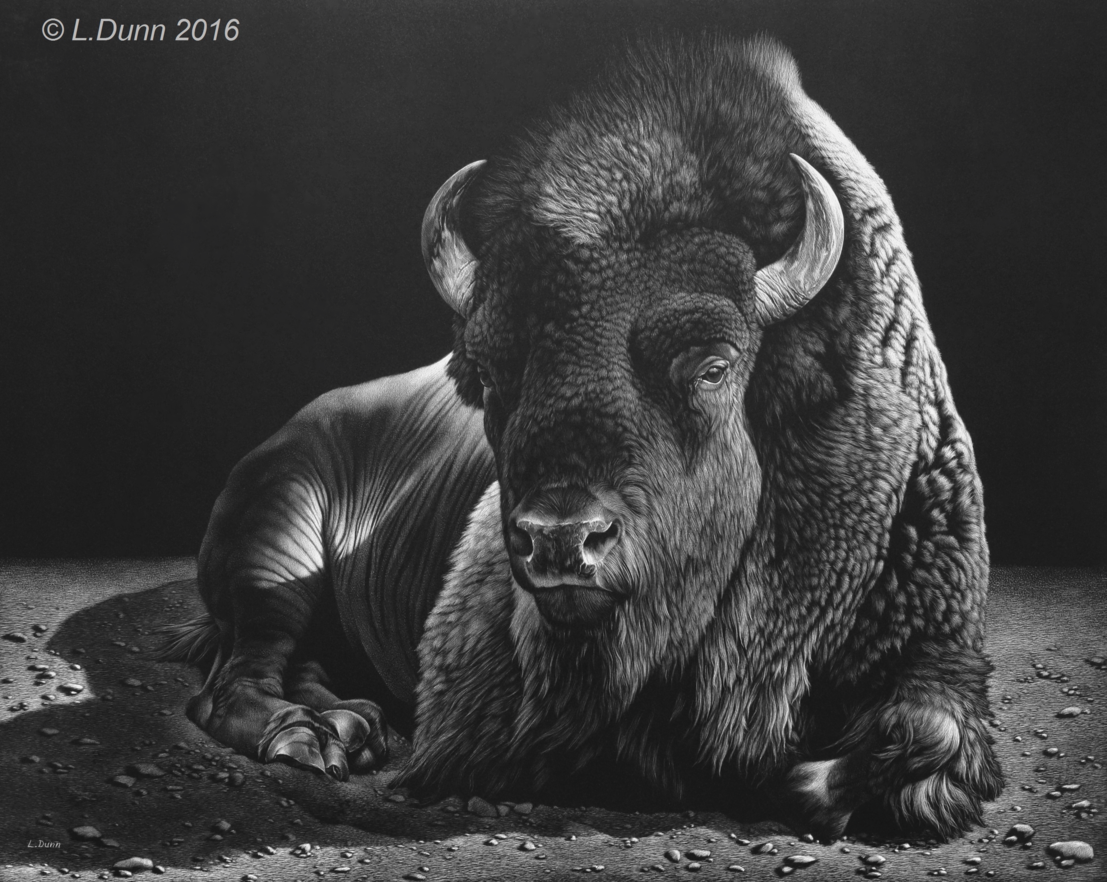LORI DUNN SCRATCHBOARD ART
promoting conservation through artistic efforts
Heart Of The Plains
16 x 20
SOLD
Much has been written about the mass slaughter of the American bison in the 1800's, which saw a population of approximately 50 to 60 million animals plummet to about 500 individuals by the year 1900. A handful of ranchers were credited for taking some of the remaining animals from the wild to prevent their extinction. They thought that by cross breeding with their own cows they could produce hardier cattle, but many of the hybrid males ended up becoming sterile and the animals did not display a hybrid vigor suitable to continue the practice. In the early 1900's efforts were underway to conserve land and allow the species to recover. As so many bison had been cross bred with cattle it was difficult to ascertain which individuals were genetically pure. Even today, analysis shows remnant domestic cattle DNA within most bison populations.
You can't talk about this species without also talking about the prairies that sustained them. Bison feed exclusively on native grasses, and in turn, the prairie survives due to their presence. Bison provide seed dispersal, constant pruning of the vegetation and rooting of the soil, which allows the prairie to thrive. Without the bison, it would turn into a dustbowl. American bison were also the heart and soul of many Native American tribes, who relied heavily on these animals for meat, shelter, tools and clothing. The near extinction of these animals took a huge toll, not only physically, but spiritually, on these people, as the buffalo was a sacred animal, and a model for how to live in harmony with each other and with nature.
Today, the American bison has made somewhat of a comeback thanks to the preservation of prairie habitat and conservation efforts. Most of the 500, 000 that exist live on private ranches, the majority being raised for meat. Approximately 30,000 individuals reside on public or conservation lands such as Yellowstone National Park. There are only about 15,000 true, free ranging bison herds in North America. Threats such as habitat loss and lack of genetic diversity (as a result of their near extinction) mean that this species still relies heavily on conservation efforts and are still listed as near threatened. Native American tribes have a significant role in the recovery efforts. Many own private lands on which herds are allowed to roam, and members are playing a key role in managing these herds. Native nations work alongside private ranchers and government agencies in continuing these efforts. Thanks to dedicated people, the heart of the plains has finally returned.
